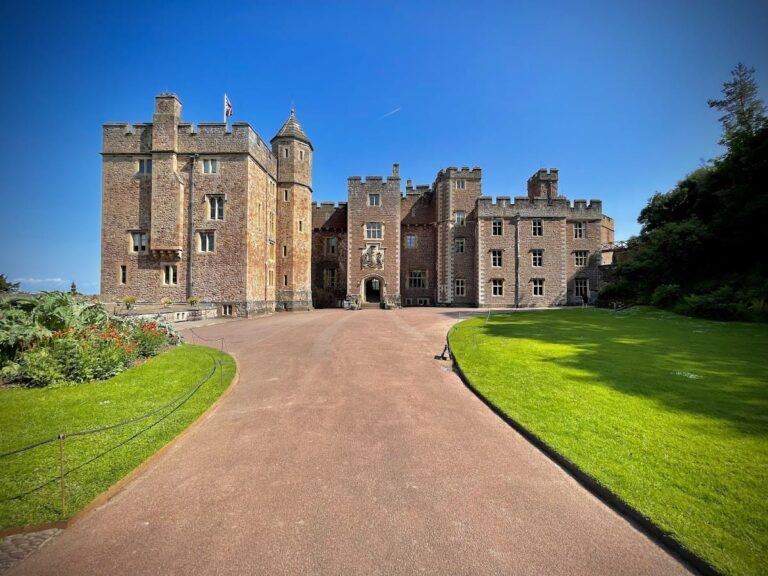Stogursey Castle: A Norman Motte-and-Bailey Fortress in England
Visitor Information
Google Rating: 4.5
Popularity: Very Low
Google Maps: View on Google Maps
Official Website: www.landmarktrust.org.uk
Country: United Kingdom
Civilization: Unclassified
Remains: Military
History
Stogursey Castle, located in Stogursey, England, was established by the Norman De Courcy family shortly after the Norman Conquest, likely in the late 11th or early 12th century. The castle’s name originated from an early form of the nearby village’s name, evolving from “Stoke Courcy” to the modern “Stogursey.”
The castle first gained prominence during a turbulent period in English history known as the First Barons’ War (1215–1217). King John took control of the fortress and ordered its demolition in 1215 as part of his military strategy, but the structure survived this command. Subsequently, his lieutenant, Falkes de Bréauté, took charge of the castle. A renewed directive to dismantle Stogursey came in 1228, but this second order was apparently not carried out.
Around the turn of the 14th century, the Fitzpayne family undertook significant reconstruction and enlargement of the castle, replacing earlier wooden elements with stonework to provide a more durable and imposing fortification. Despite reports that the castle was destroyed by Yorkist forces in the 1450s during the Wars of the Roses, no documentary or archaeological proof confirms such an event around 1457.
In the 17th century, a house was constructed within the castle’s abandoned defensive walls, marking a shift from military to residential use. This house saw restoration efforts in the 1870s, though by the later 20th century, much of the castle and its associated structures had fallen into ruin. Preservation work carried out in the late 20th century by the Landmark Trust helped save the remaining gatehouse and parts of the site.
Remains
Stogursey Castle was originally built as a motte-and-bailey complex, a common Norman form of fortification featuring a raised earthwork mound (motte) topped with a defensive structure, alongside enclosed courtyards (baileys). The motte at Stogursey measures approximately 60 metres across and stands about two metres high. Surrounding the motte were two separate bailey enclosures, each protected by earthworks and ditches.
Encircling the entire castle was a moat that was filled with water, sourced from the nearby Stogursey Brook, enhancing the site’s natural defenses. This water-filled moat would have hindered any attacking forces and added an additional barrier to the castle’s stronghold.
Today, most of the castle lies in ruins, with stonework and earthwork features partially eroded over time. One prominent surviving structure is the gatehouse, which originally controlled access to the castle grounds. This gatehouse has been restored and is notable for its thatched roof, a distinctive feature uncommon in castles but reflecting later alterations and restoration choices. The gatehouse has been adapted for modern use while preserving its historical character.
Within the castle’s enclosure, the remains of a 17th-century house can be found, built after the castle’s military significance diminished. This house was restored in the 19th century but had fallen into disrepair by the late 20th century before conservation efforts began to stabilize and preserve the surviving elements of the castle complex.










